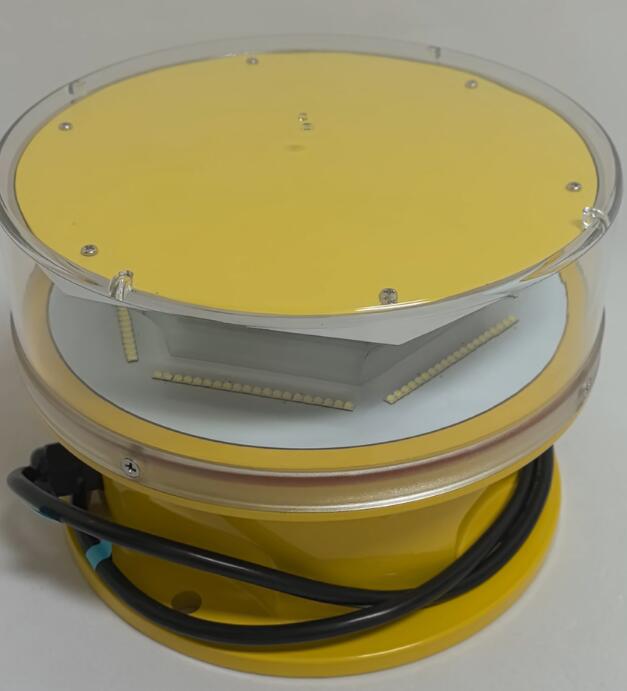Airfield Lighting System: Enabling Precision and Safety in Modern Aviation
An airfield lighting system is a cornerstone of safe and efficient aviation operations. Whether guiding commercial airliners during night landings or supporting military flights in adverse weather, these systems form an invisible yet vital network across global runways and taxiways. While often overlooked by passengers, the evolution and sophistication of airfield lighting systems have been instrumental in pushing the boundaries of aviation safety and efficiency.
Understanding the Airfield Lighting System
An airfield lighting system comprises various lighting components installed across runways, taxiways, aprons, and approach paths. Each light serves a specific function—illuminating paths, marking runway thresholds, indicating directions, and ensuring visibility in low-light or challenging weather conditions. These systems operate according to stringent international standards set by bodies like ICAO and FAA, ensuring consistency and reliability across airports worldwide.
The typical components of an airfield lighting system include:
Runway Edge Lights: Outline the edges of the runway during periods of darkness or low visibility.

Runway End Identifier Lights (REILs): Provide rapid and positive identification of the runway end.
Threshold Lights: Mark the beginning and end of the usable portion of the runway.
Taxiway Lights: Guide aircraft along taxi routes, preventing runway incursions.
Approach Lighting Systems (ALS): Assist pilots in aligning with the runway during final approach.
PAPI/VASI Systems: Provide visual glide slope guidance to approaching aircraft.
Each light is designed with specific color, intensity, and positioning standards to avoid confusion and ensure universal interpretation by pilots.
Enhancing Safety and Precision
The primary purpose of an airfield lighting system is to ensure operational safety. It provides pilots with critical visual cues that aid in navigation, positioning, and decision-making during approach, landing, takeoff, and taxiing. These systems are indispensable during nighttime operations and in low-visibility conditions caused by fog, rain, or snow.
Visual aids like the PAPI (Precision Approach Path Indicator) or VASI (Visual Approach Slope Indicator) systems help pilots maintain the correct descent angle, reducing the risk of unstable approaches or hard landings. Furthermore, runway centerline and touchdown zone lights enhance precision during landing, especially in low-visibility conditions.
Integration with Modern Technology
Airfield lighting systems are increasingly integrated with airport control systems to support real-time adaptability and enhanced monitoring. Intelligent control systems allow lighting intensity adjustments based on weather, visibility, and time of day. This not only enhances visibility but also conserves energy.
Some systems incorporate remote control functionality, enabling air traffic control (ATC) or even pilots (via Pilot-Controlled Lighting) to manage lighting levels. This is especially useful for smaller airports or remote airfields with limited staff presence.
Recent developments have also introduced advanced monitoring tools that report faults or performance drops in real-time, ensuring rapid maintenance and reducing downtime.
Applications Across Different Airfields
Commercial Airports
Major international airports rely heavily on complex airfield lighting systems to manage heavy air traffic. These systems enable simultaneous runway operations, help avoid delays, and minimize the risk of accidents due to visibility issues or miscommunication.
Military Airbases
Military operations demand flexibility and reliability. Airfield lighting systems at military airbases are often designed to function in extreme environments and under blackout conditions. Some include infrared or covert lighting elements that are visible only through night vision equipment, supporting stealth operations.
Regional and Remote Airfields
Smaller or remote airfields may use scaled-down versions of standard lighting systems. However, even in these environments, lighting plays a crucial role in ensuring safety. Some of these airfields utilize solar-powered or semi-permanent lighting solutions, especially in areas without a reliable power grid.
Helipads and Vertiports
As rotorcraft and vertical takeoff operations increase, especially with the rise of urban air mobility, specialized airfield lighting systems are being developed for helipads and future vertiports. These systems are tailored for vertical operations, providing enhanced orientation and landing guidance.
Sustainability in Lighting Design
With a growing focus on energy efficiency and environmental impact, modern airfield lighting systems are being designed with sustainability in mind. LED technology has become the industry standard, replacing older incandescent systems. LEDs offer multiple advantages:
Lower energy consumption
Longer lifespan
Minimal maintenance
Uniform brightness and color
Solar-powered systems are also gaining popularity, especially in regions with high solar exposure or limited electrical infrastructure. These systems are particularly beneficial in remote airfields, offering autonomy and reliability without increasing operational complexity.
Challenges and Considerations
Despite the advantages, maintaining a high-performance airfield lighting system poses several challenges. These include:
Environmental Exposure: Systems must withstand harsh weather, temperature fluctuations, and constant exposure to aircraft jet blasts.
Electrical Reliability: Consistent power delivery and system integrity are crucial for performance.
Maintenance and Monitoring: Regular inspection is required to prevent failures. Automated monitoring tools are helping reduce this burden.
System Redundancy: Backup systems and fail-safes must be in place to handle unexpected outages.
In addition, careful planning is necessary to ensure lighting configurations do not interfere with pilot vision or conflict with other navigational aids.
Future Trends
As airports evolve into smarter and more automated environments, airfield lighting systems will play a central role in digital transformation. Upcoming trends include:
Integration with AI and Automation: Predictive analytics can identify maintenance needs before failures occur.
Smart Lighting Networks: Systems capable of communicating with other airport infrastructure for dynamic coordination.
UAV-Compatible Lighting: With the rise of drone delivery and eVTOL aircraft, new lighting standards are being developed to cater to these platforms.
Cybersecurity Measures: As systems become more connected, ensuring security from digital threats becomes critical.
An airfield lighting system is far more than a series of lights lining a runway. It is a meticulously engineered safety mechanism that plays a crucial role in every flight’s success. As aviation continues to expand, the demand for more intelligent, resilient, and sustainable lighting systems will only grow.
By supporting precision, enabling nighttime and low-visibility operations, and integrating with smart technologies, airfield lighting systems continue to define the future of safe air travel. Whether at a bustling international hub or a remote airstrip, these systems ensure that flight operations remain guided, grounded, and secure—day or night, in clear skies or fog.
